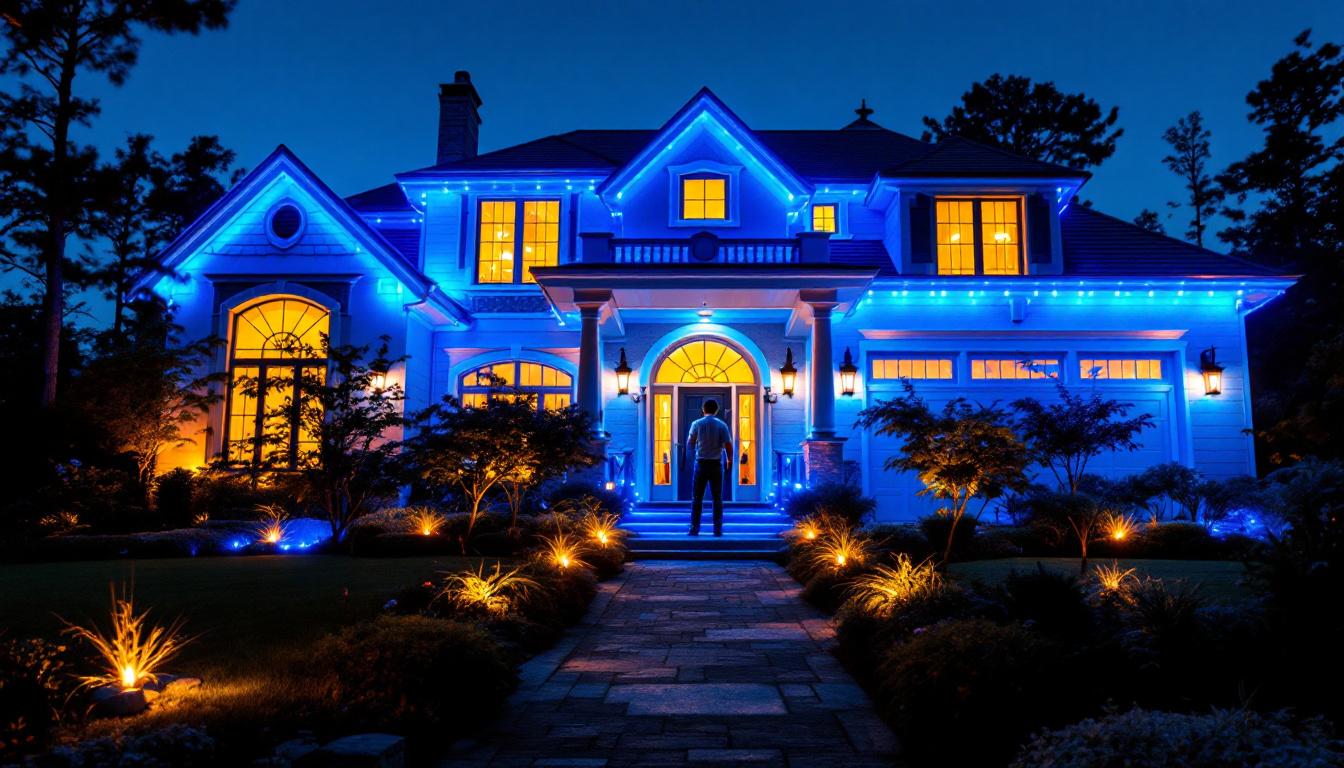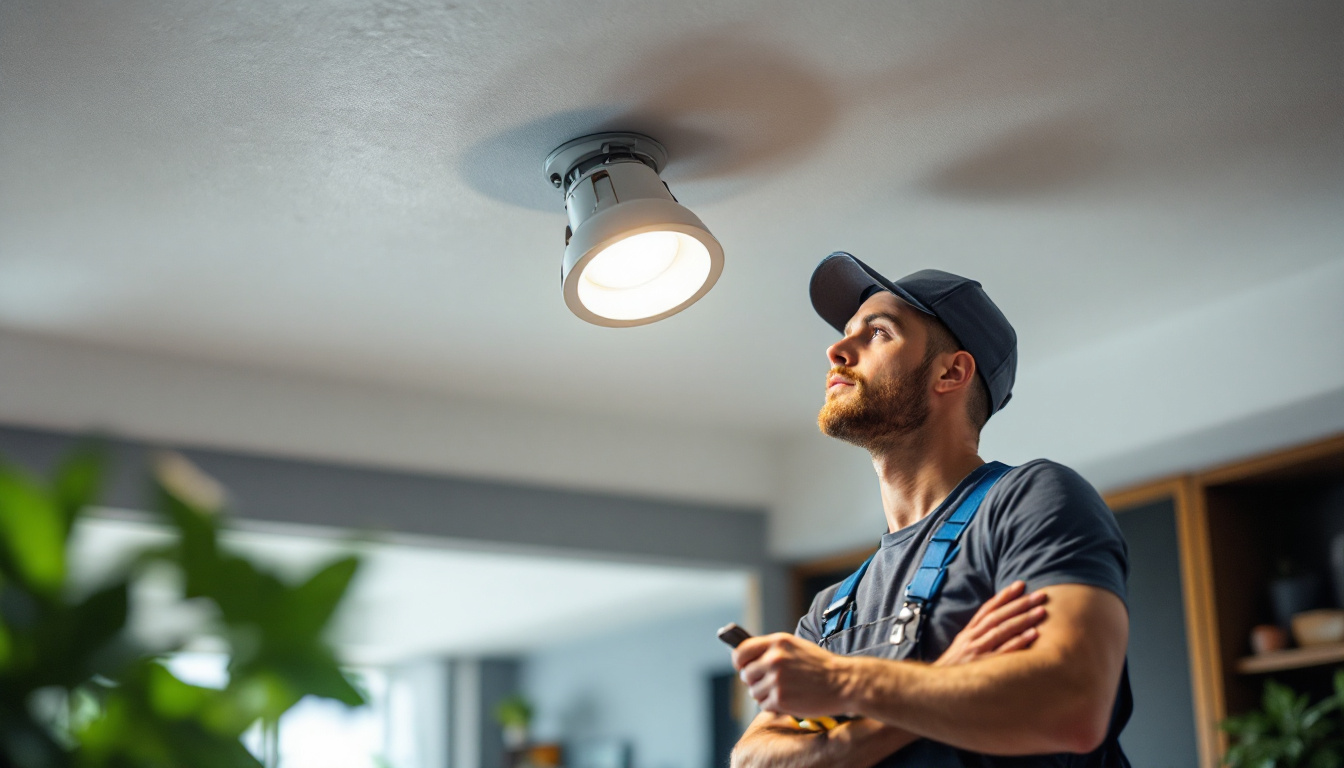
In the world of lighting design, recessed LED lamps have become a staple for both residential and commercial applications. Their sleek appearance and energy efficiency make them a popular choice among contractors and homeowners alike. However, despite their widespread use, there are several important factors that lighting contractors often overlook when specifying and installing these fixtures. This article delves into those overlooked aspects, aiming to provide a comprehensive understanding that can enhance the quality of lighting projects.
Before diving into the nuances of recessed LED lamps, it’s essential to understand their fundamental characteristics. Recessed lighting, often referred to as “can lights” or “downlights,” is installed into a hollow opening in the ceiling. This design allows the fixture to be flush with the ceiling surface, providing a clean and unobtrusive look. The seamless integration of these fixtures into the ceiling can enhance the overall aesthetic of a room, making it feel more spacious and modern. Additionally, the ability to direct light where it is most needed can significantly improve the functionality of a space.
LED technology has revolutionized this type of lighting, offering longer lifespans and lower energy consumption compared to traditional incandescent or fluorescent bulbs. However, the benefits of LED recessed lighting extend beyond just energy efficiency; they also include improved color rendering, dimming capabilities, and reduced heat output. This means that not only do LED lamps consume less power, but they also produce a more vibrant light that can enhance the appearance of colors in a room. Furthermore, the dimming capabilities allow for customizable ambiance, making it easy to transition from bright task lighting to a softer, more relaxed atmosphere for gatherings or movie nights.
There are various types of recessed LED fixtures available on the market, each designed for specific applications. Understanding these types can help contractors make informed decisions based on the needs of their clients. Selecting the right fixture can significantly impact the lighting quality and energy efficiency of a space, making it crucial to consider factors such as ceiling height, room purpose, and desired lighting effect.
In addition to these types, there are also specialized fixtures such as adjustable or gimbal recessed lights, which allow for directional lighting, making them ideal for highlighting artwork or architectural features. Furthermore, smart recessed LED options are becoming increasingly popular, enabling homeowners to control their lighting through mobile apps or voice commands, adding a layer of convenience and modernity to home lighting systems. With the growing trend of smart homes, incorporating advanced lighting technology can not only enhance the user experience but also contribute to energy savings and increased home value.
While the installation of recessed LED lamps may seem straightforward, several factors can significantly impact their performance and effectiveness. Lighting contractors must pay attention to these details to ensure optimal results.
One of the most critical aspects of recessed lighting is the placement and spacing of fixtures. Many contractors tend to install lights without considering the overall layout of the room. A common guideline is to space the fixtures approximately 4 to 6 feet apart, depending on the height of the ceiling and the desired brightness.
Additionally, the distance from the wall should also be taken into account. Placing fixtures too close to walls can create harsh shadows, while too far away may leave areas inadequately lit. A well-planned layout ensures even illumination and enhances the room’s aesthetics.
The trim of a recessed LED lamp plays a significant role in both functionality and style. Contractors often overlook the importance of selecting the appropriate trim type for the specific application. Trims come in various styles, including baffle, reflector, and adjustable options, each serving different purposes.
For instance, a baffle trim can help reduce glare, making it ideal for living spaces, while a reflector trim can enhance brightness in areas requiring more light, such as kitchens or workspaces. Understanding the intended use of the space can guide contractors in choosing the right trim to achieve the desired lighting effect.
Energy efficiency is a significant selling point for LED lighting, but there are still aspects that contractors may overlook when it comes to maximizing this benefit. Understanding how to optimize energy use can lead to cost savings for clients and enhance the overall appeal of the project.
When selecting recessed LED lamps, it’s essential to consider both wattage and lumens. While LEDs consume less wattage than traditional bulbs, contractors must ensure they are choosing fixtures that provide adequate lumens for the intended application. A common mistake is to focus solely on wattage, neglecting the importance of brightness.
For example, a 10-watt LED may produce the same amount of light as a 60-watt incandescent bulb. Understanding the lumen output and how it relates to the space being illuminated is critical for achieving the desired lighting effect.
Another often-overlooked aspect is the compatibility of recessed LED lamps with dimmer switches. Not all LED fixtures work seamlessly with dimmers, and using incompatible products can lead to flickering or reduced lifespan. Contractors should verify that the selected LED lamps are compatible with the dimming systems being used in the project.
Moreover, educating clients about the benefits of dimmable LED fixtures can enhance their overall experience. Dimming capabilities allow for greater control over lighting levels, creating versatile atmospheres suitable for various activities.
Color temperature is a crucial factor that influences the mood and functionality of a space. However, it is often overlooked during the selection process. Recessed LED lamps are available in a range of color temperatures, typically measured in Kelvins (K).
Contractors should consider the intended use of the space when selecting color temperature. For instance, warmer tones (2700K-3000K) create a cozy and inviting atmosphere, making them ideal for living rooms and bedrooms. Conversely, cooler tones (4000K-5000K) are better suited for workspaces and kitchens, where bright, clear light is essential.
Understanding these nuances can significantly enhance the overall aesthetic and functionality of the space, leading to higher client satisfaction.
The Color Rendering Index (CRI) is another critical factor that often goes unnoticed. CRI measures a light source’s ability to accurately render colors compared to natural light. A higher CRI (above 80) is generally preferred for residential and commercial spaces, as it ensures that colors appear true to life.
Contractors should always check the CRI rating of the recessed LED lamps they are considering, especially for applications where color accuracy is crucial, such as art galleries or retail environments.
Even with the right products, improper installation techniques can lead to subpar lighting performance. Contractors should adhere to best practices to ensure that recessed LED lamps function optimally and provide long-lasting results.
Ensuring proper wiring and connections is fundamental to the successful installation of recessed LED fixtures. Contractors should follow the manufacturer’s instructions carefully and adhere to local electrical codes. Poor connections can lead to flickering lights or, in worst-case scenarios, electrical hazards.
Additionally, using high-quality connectors and ensuring secure connections can prevent future maintenance issues. Taking the time to double-check wiring can save both time and resources in the long run.
Heat management is another critical aspect that contractors often overlook. While LEDs produce less heat than traditional bulbs, they still generate some heat, which can affect performance and lifespan if not managed correctly. Using fixtures with adequate ventilation and ensuring they are not covered by insulation can help mitigate heat buildup.
Contractors should also be aware of the importance of using IC-rated fixtures in insulated ceilings to prevent overheating. Proper heat management ensures that the LED lamps operate efficiently and last longer, providing clients with a better return on investment.
The lighting industry is continually evolving, with new technologies and trends emerging regularly. Staying informed about these trends can help contractors remain competitive and provide cutting-edge solutions to their clients.
One of the most significant trends in lighting is the integration of smart technology. Smart recessed LED lamps can be controlled via smartphones or voice-activated devices, allowing users to adjust brightness, color temperature, and even set schedules.
Contractors should consider offering smart lighting options to clients, as this technology enhances user convenience and can lead to energy savings. Educating clients about the benefits of smart lighting can also set contractors apart in a competitive market.
As sustainability continues to be a priority for many consumers, lighting contractors should emphasize the eco-friendly aspects of recessed LED lamps. Highlighting energy efficiency, reduced carbon footprints, and the longevity of LED technology can resonate with environmentally conscious clients.
Moreover, offering solutions that incorporate recycled materials or sustainable manufacturing processes can further enhance a contractor’s reputation as a forward-thinking professional in the lighting industry.
Recessed LED lamps offer a versatile and energy-efficient lighting solution that can transform any space. However, lighting contractors must pay attention to the often-overlooked aspects of installation, selection, and technology integration to maximize the benefits of these fixtures. By considering factors such as proper placement, wattage, color temperature, and smart technology, contractors can ensure that their projects not only meet but exceed client expectations.
Ultimately, staying informed about industry trends and best practices will empower contractors to deliver high-quality lighting solutions that stand the test of time. Embracing these considerations will not only enhance the contractor’s skill set but also foster long-lasting relationships with clients who appreciate thoughtful and effective lighting design.
Ready to elevate your lighting projects with the quality and efficiency of recessed LED lamps? Look no further than LumenWholesale for all your lighting needs. Our extensive selection of spec-grade lighting products is designed to meet the highest industry standards, ensuring you deliver exceptional results to your clients. With unbeatable wholesale prices and the convenience of free shipping on bulk orders, you can trust us to provide the best value without any hidden fees. Don’t compromise on quality or cost—choose LumenWholesale for a seamless purchasing experience. Explore our collection and find the best wholesale lighting deals now!

Discover how “Cilling Light” is revolutionizing the lighting industry by empowering contractors with innovative tools and technologies.

Discover how blue lights on houses are revolutionizing the lighting industry, offering new opportunities and challenges for contractors.

Explore how the choice of ceiling lighting in home offices can significantly impact the profitability of lighting contractors.

Discover the key essentials for lighting contractors looking to master recessed can light retrofits.